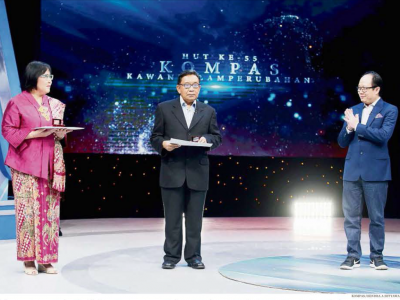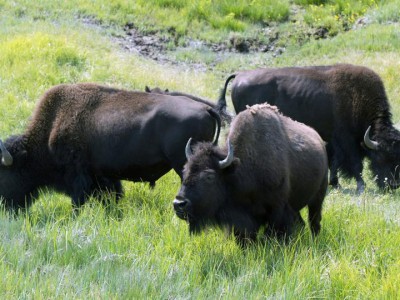Quarantine Island and Meat Self-Sufficiency
Thursday, 3 March 2016
This post is also available in: Indonesian
Author: Khudori, Member of Expert Workgroup for National Food Security Board, Indonesia Economy Politic Association (AEPI)
Without any respite, the government keeps on trying to ‘prefect’ a number of regulations and policies to ensure meat self-sufficiency could be achieve in 2017. In addition to improving weaknesses in determining the import quota for breeding cattle and meat cattle, special livestock transport ships were made. To ensure there is enough meat supply in markets, through economic policy packages I and IX, requirements on the source of import was loosed, from country-base to zone-base. There were also policies from Ministry of Agriculture Regulation No. 58/2015 which frees the import of variety meat and Ministry of Finance Regulation No. 267/2015 on value-added tax which only lasted for 15 days and was then revoked. All of these policies were made to ensure enough supply. Of all the policies, one interesting (and controversial) decision was the relaxing of the source of meat import, from Foot and Mouth Disease (FMD)-free country to FMD-free zone. This policy allows the import of meat from FMD-free zones although the country is not FMD-free. The basis of the policy is to prevent market instability through guaranteed supply and affordable prices.
Stable meat prices will help the government control inflation. In the last few years, one of the main contributors to inflation is food, and within it meat. As a precaution, the government has assigned Naduk Island, a previously forest production area in Bangka Belitung, to become a quarantine island. This island will hold imported breeder cattle from FMD endemic countries. The purpose of the breeder cattle is to add to the domestic population and become a sustainable production base. Environmental assessment and design details will be finished this year. Physical development such as pens, harbor and naval fleets, and special road access will start in 2017. The basis of this policy is Act No. 41/2014 on Livestock and Animal Health, which is a revision of Act No. 18/2009. To facilitate the relaxation of regulations on meat supply source, the Ministry of Agriculture amended Minister of Agriculture Regulation No. 139/2014 on Carcass, Meat and Product Import to Indonesia with Minister of Agriculture Regulation No. 53/2015.
The issue is that Act No. 41/2014 is facing material review in the Constitutional Court. The article challenged is 36C on Breeder Ruminants Import into Indonesia which at the moment is allowed to come from a country or zone in a country that meets import requirements and procedures. This article clearly did not comply with results of court’s judicial review on Act No. 18/2009. Previously, Article 59 line 2 of Act No. 18/2009 allowed the import of animal products from a country or zone in a country which meets animal product import requirements and procedures. Through material review instigated by livestock stakeholders, this article was changed by the Constitutional Court into “from a country” only, omitting the zone in a country clause. One of the main considerations was applying ‘maximum security’. Certainly, there is a difference between Article 36C and Article 59 line 2, one states breeder ruminants while the other states animal products. However, a difference in commodity in Act No. 18/2009 and Act No. 41/2014 does not lower the risk of infectious animal disease transmission.
Actually, government efforts to revise Act No. 18/2009 started not long after the Constitutional Court made its judgement on August 27, 2010. The reason is because the country-based approach restricts Indonesia to only import meat (and cattle) from a number of countries. Because there aren’t many FMD free countries, Indonesia is very reliant on meat (and cattle) supply from Australia (and New Zealand). In truth, besides Australia and New Zealand, Indonesia can also import meat and cattle from the United States, Canada, and Japan, which are all FMD free countries. However, Indonesia mostly imports meat and cattle from Australia because it is geographically closer and results in cheaper meat and cattle prices.
It is true that meat and cattle prices from FMD free countries are higher than FMD endemic countries. The US, for example, imports premium meat from Australia at a 30% higher rate than from FMD endemic countries.
However, this could not be used to justify the loosening of livestock import regulations, particularly cattle. If FMD once again emerges in Indonesia, the economic consequences faced will be unimaginable. The economic loss Indonesia has suffered from handling FMD for 100 years (1887-1986), according to data from the Directorate General of Livestock Services (2008), reached 1.66 billion USD or 19.92 trillion rupiahs. For FMD free countries, including Indonesia, it’s very important to ensure animal and products imported come from countries with the same status. Live animal trade is not recommended between FMD free and endemic countries. The World Animal Health Organization (OIE) has set animal health standards and requirements for importing animals and their products to ensure safe trade worldwide. According to OIE, cattle can be imported from countries with FMD-free zones, but strong additional requirements are needed in the exporting and importing country (Naipospos, 2015).
These requirements are what the Independent Risk Analysis Team recommended the Ministry of Agriculture develop (Kementan, 2008). Sanitary measures in exporting countries, such as only exporting boneless frozen meat without lymph nodes, excluding offal and variety meat, and originating it only from FMD-free without vaccination zones, should be prioritized. Alternatively, importing from FMD-free with vaccination zones can be done as long as there is no FMD outbreak in the last 3 years, non-stop transportation of animals from farms, and animals are slaughtered only in slaughterhouses approved by the importing country.
Sanitary measures in importing countries include increasing technical capacities and diagnostic facilities of animal quarantine, strengthening the animal health system, improving technical capacities and laboratory diagnostic facilities for testing FMD, surveillance and monitoring in all areas where imported meat is distributed. Additional measures can include FMD socialization and veterinary emergency preparedness simulations, allocation of a ready-to-use FMD emergency response budget, limiting the import of boneless frozen meat, facility (cold storage, etc.) certification, audit and supervision, increasing the meat distribution supervision system, and improving public knowledge and awareness on meat waste management.
This shows that beef import from FMD-endemic countries is possible as long as the safety system (Veterinary Act), infrastructure (veterinary authority and human resources), and veterinary services in Indonesia is improved first. Without that, import should not be done because it can threaten our national target to achieve meat self-sufficiency in 2017. Meat import from FMD endemic zones is very risky because there are many loopholes in our system and infrastructure. First, our animal health system is weak, mainly because there is no direct commando line from the central to local governments for disease prevention, control, and eradication. Second, emergency response funds are not always available. Third, technical capacity and diagnostic facilities to detect FMD viruses in animals and animal products in quarantine stations in entry ports are not available. Fourth, diagnostic laboratories to detect FMD viruses with adequate technical capacity and facilities are also unavailable (TARI, 2008).
Source: Media Indonesia

 English
English Indonesia
Indonesia 








